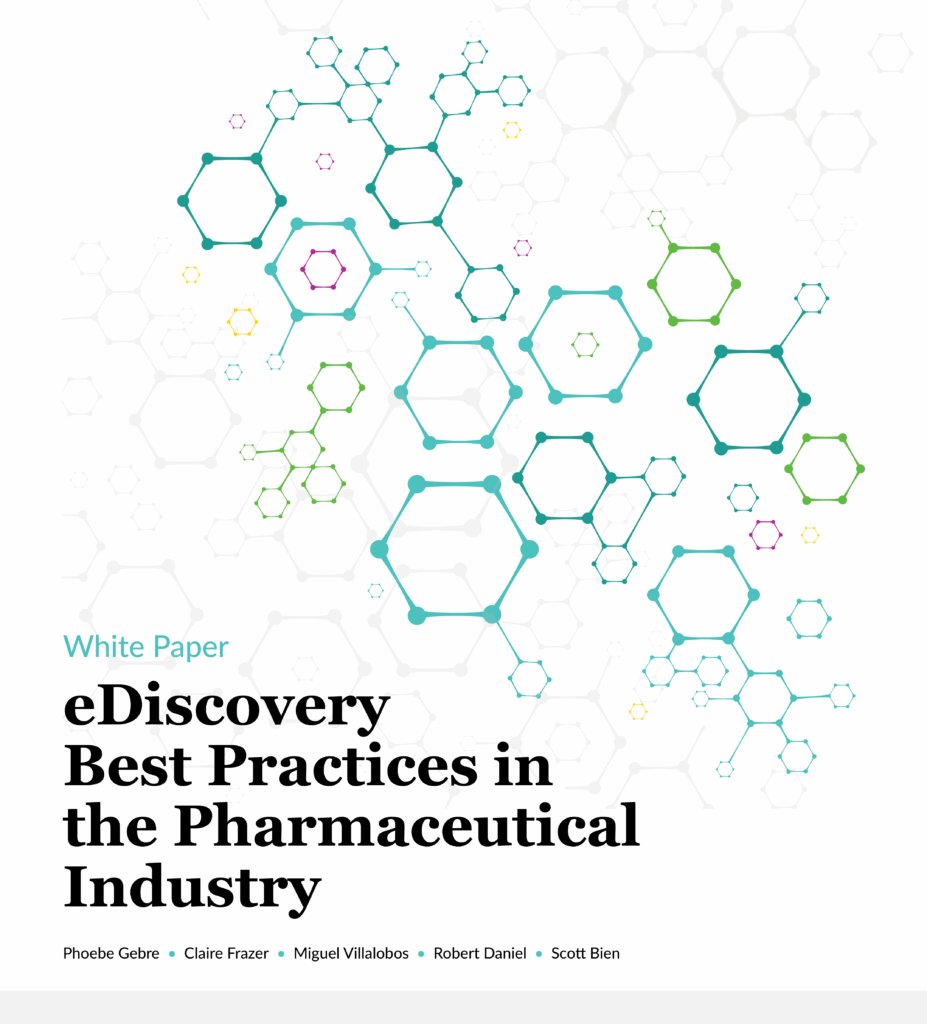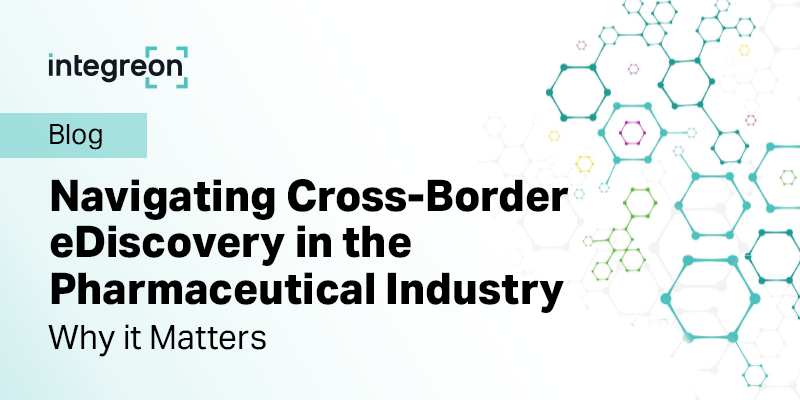Key Takeaways
- Pharmaceutical companies must carefully navigate conflicting international privacy laws and data sovereignty rules to ensure compliant cross-border eDiscovery.
- Best practices involve thorough data mapping, localized processing, and strong contractual and technical safeguards such as encryption and pseudonymization.
- Engaging regulators early, maintaining transparent documentation, and fostering collaboration between legal, IT, and privacy teams are critical for defensible discovery processes.
Operating globally across multiple jurisdictions, pharmaceutical companies must protect sensitive patient data, clinical trial information, and intellectual property while navigating some of the world’s most demanding regulatory frameworks. When litigation or regulatory inquiries arise, these organizations must manage not just the volume of data but also its movement across borders.
Conflicting international privacy obligations, strict data sovereignty rules, and demanding regulatory regimes can make cross-border eDiscovery one of the most challenging aspects of legal and compliance work in the pharma sector. Non-compliance carries steep risks: financial penalties, regulatory sanctions, and reputational damage. To navigate these challenges, companies should adopt a strategic, legally defensible framework aligned with recognized standards such as The Sedona Conference’s International Principles on Discovery, Disclosure, and Data Protection (Second Edition, 2017) and its Practical In-House Approaches for Cross-Border Discovery & Data Protection (2016).
Key Challenges in Cross-Border eDiscovery
Contrasting Definitions of Data
In the European Union, personal data is broadly defined under GDPR to include names, email addresses, or employment history, with “processing” encompassing nearly every data-handling activity, such as collection, storage, review and transfer. In contrast, U.S. definitions are narrower, creating frequent misunderstandings and compliance gaps during multinational discovery exercises.
Conflicting Litigation vs. Privacy Obligations
U.S. litigation requires broad disclosure under the Federal Rules of Civil Procedure. These obligations often clash with strict data protection regimes like the EU’s GDPR, China’s PIPL, or Brazil’s LGPD, which limit how sensitive data, particularly employee and patient data, may be collected, stored, or transferred. These conflicting rules create legal and operational challenges.
Regulatory Oversight and Investigations
Pharmaceutical companies regularly receive requests for cross-border data from regulators including the U.S. DOJ, SEC, FDA, the E.U.’s EMA, and the U.K.’s MHRA. While
cooperation is critical, local data protection laws can constrain disclosure. Sedona Principle 2 emphasizes “reasonableness and good faith”, which means that companies must not only balance these obligations but also document their decision-making and demonstrate transparency by engaging with regulators and data protection authorities early in the process.
Data Sovereignty and Localization Requirements
Many jurisdictions, including China, Russia, Brazil, and India, mandate that certain categories of data, such as health or biometric information, be stored and processed domestically. This complicates centralized litigation response and often requires creative solutions, such as in-country processing and tiered production approaches.
Best Practices for Managing Cross-Border eDiscovery
1. Data Mapping and Risk Assessment
Per Sedona Principle 6, organizations must take reasonable, good-faith efforts to retain and manage data. Conducting data mapping exercises is foundational: companies should identify where sensitive data resides, who controls it, what laws apply, and when data can be defensibly disposed of. A risk-based approach, bringing together legal, IT, compliance, and business units, ensures comprehensive oversight and proactive risk management.
2. Localized Data Processing and Minimization
To comply with data localization laws, companies should establish in-region hosting or review centers and use secure, country-specific cloud solutions. Where possible, stage reviews by prioritizing U.S.-based custodians first to determine if broader data pulls are necessary. This minimizes unnecessary cross-border transfers and aligns with proportionality principles.
3. Contractual and Technical Safeguards
Under GDPR, Standard Contractual Clauses (SCCs) remain a primary mechanism for lawful cross-border transfers. Following Schrems II, these must be supplemented with additional protections such as encryption, anonymization, or pseudonymization before transfer. Implementing zero-trust security models and encrypted channels further reduces exposure risks.
4. Regulatory Engagement and Country-Specific Protocols
Companies should prepare clear playbooks for jurisdiction-specific requests, incorporating:
· Templates and process documentation (e.g., Sedona’s Cross-Border Discovery Management Template) to track obligations, data flows, and justifications.
· Local counsel coordination to navigate unique country laws.
· Proactive regulator engagement to align on scope, redaction, or anonymization protocols before data moves.
· Rapid response procedures for government inquiries to reduce delay and demonstrate transparency.
5. Cross-Functional Collaboration
Effective cross-border eDiscovery requires integrated workflows between Legal, IT, Infosec and Privacy teams. Secure transfer mechanisms, defensible documentation, and aligned protocols ensure compliance while maintaining efficiency. This reflects Sedona’s emphasis on joint legal-technical collaboration as a cornerstone of defensible discovery.
Building Defensible and Resilient Processes
Cross-border eDiscovery in pharma requires more than an ad hoc approach. It requires a structured, risk-based framework rooted in global best practices and legal defensibility. By aligning with Sedona Principles, investing in localized processing and secure transfer protocols, and maintaining transparency with regulators, pharmaceutical companies can manage these complexities without compromising compliance, patient privacy, or intellectual property.
Ultimately, the companies that will thrive are those that recognize cross-border eDiscovery not as a compliance burden, but as a strategic capability – one that strengthens global governance and builds organizational resilience.
Download your copy of eDiscovery Best Practices in the Pharmaceutical Industry.

White Paper Overview
This white paper covers best practices for eDiscovery in the pharmaceutical industry, focusing on challenges posed by the vast volume and sensitivity of electronically stored information (ESI) generated during drug development, clinical trials, and regulatory compliance.


